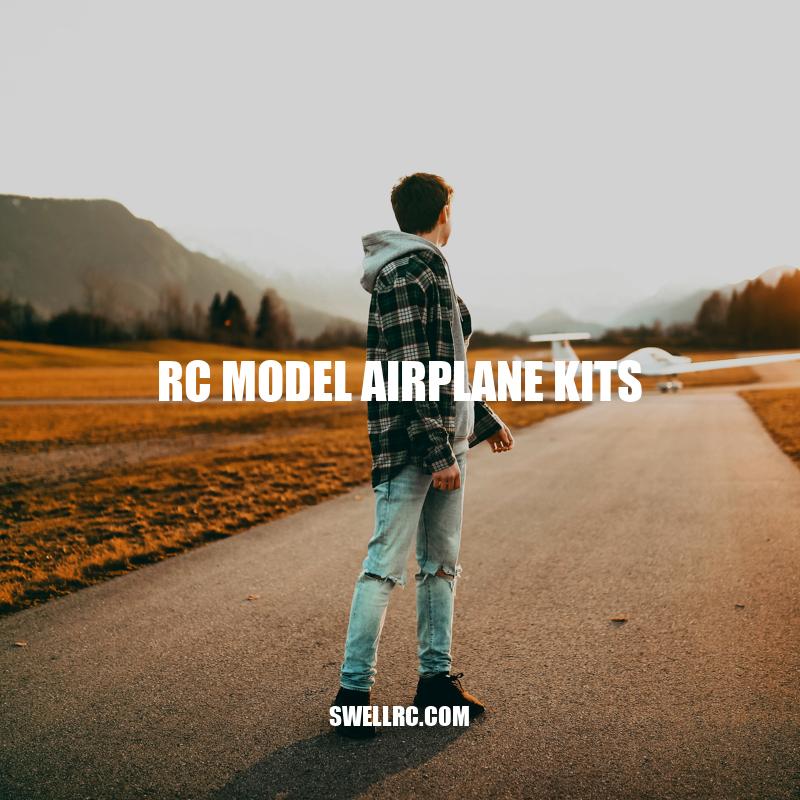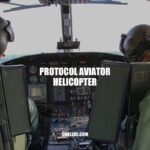Building RC Model Airplanes: The Ultimate Guide to Kits and Flying
Building an RC model airplane from a kit is a rewarding and exciting experience that can bring hours of joy and satisfaction to hobbyists of all ages. The process of building an RC airplane from a kit requires patience, attention to detail, and a passion for the hobby. RC model airplane kits are becoming increasingly popular among hobbyists as they offer a unique opportunity to construct and personalize a model airplane that can be flown and admired for years to come. Although building an RC model airplane from a kit may seem daunting at first, it is a fulfilling experience that allows the builder to learn new skills, expand their creativity, and develop a deeper understanding of the technology that goes into creating an RC aircraft. In this article, we will explore the various types of RC model airplane kits, the tools and materials needed to build them, the building process, flying tips, and maintenance and repair information to help hobbyists get started on their RC model airplane building journey.
Types of RC Model Airplane Kits
There are various types of RC model airplane kits available for hobbyists to purchase. Some of the most popular types include:
- Balsa Wood Kits: These kits are made from lightweight balsa wood and require more skill and patience to build. They are a great option for more experienced builders who want a more authentic and traditional model airplane.
- Foam Kits: These are modern and lightweight kits that are made from foam and are perfect for novice builders with less experience as they are easier to build.
- Electric Powered Kits: These kits use electric motors and batteries instead of gas-powered engines, and they are more environmentally friendly and easier to operate than nitro-powered planes.
- Gas Powered Kits: These are engines that use a combustible fuel and are ideal for experienced model airplane hobbyists who want a more complex challenge.
Choosing the right kit depends on the hobbyist’s preferences, skill level, and experience. A wide range of websites such as Tower Hobbies, Horizon Hobby, and HobbyKing offer a variety of kits to choose from.
What are the different types of RC plane materials?
There are several different types of materials used for building RC planes. Here are some of the most common:
| Type of Material | Description |
|---|---|
| Balsa Wood | A lightweight wood that is easy to work with and commonly used in model aircraft construction. |
| Foam | A less durable material that is very lightweight and often used for indoor RC planes. |
| Carbon Fiber | A strong and lightweight material that is commonly used in high-end RC planes. |
| Fiberglass | A durable and strong material that is commonly used in larger RC planes and gliders. |
To learn more about RC planes and the materials used to build them, check out websites like HobbyKing and Horizon Hobby. They offer a wide variety of products and resources for RC enthusiasts of all levels.
Tools and Materials Needed
To successfully build an RC model airplane kit, certain tools and materials are required. Some of the basic ones include:
- Hobby Knife: This is a specialized knife that hobbyists use to cut and shape the balsa wood or foam material.
- Glue: A good quality, fast-drying glue is essential for holding the airplane parts together.
- Sandpaper: Sandpaper should be used to smooth out rough edges or uneven areas of the balsa wood or foam material.
- Building Board: This is a flat surface used to build the airplane on, and it can be made of various materials such as foam or cork.
- Paint: Paint is used to add colors and designs to the finished airplane, and various types of paints can be used such as spray paint, airbrush paint, or acrylic paint.
It is important to choose the right tools and materials to ensure that the RC model airplane kit is built to perfection. Some websites offer specialized tools and materials, including those tailored to particular airplane kits. A useful website that provides a comprehensive guide for these tools is Model Aviation. To find the best deals on tools and materials, websites like Amazon, eBay, and AliExpress can be prime destinations.
Here’s a table of some of the essential tools and materials needed for building an RC model airplane:
| Tool/Material | Description |
|---|---|
| Hobby Knife | A specialized knife used to cut and shape balsa wood or foam material. |
| Glue | A good quality, fast-drying glue used to hold airplane parts together. |
| Sandpaper | Used to smooth out rough edges or uneven areas of the balsa wood or foam material. |
| Building Board | A flat surface for building the airplane on, made of various materials such as foam or cork. |
| Paint | Adds colors and designs to the finished airplane, and various types of paints can be used. |
What do you need to build a model airplane?
To build a model airplane, you will need the following:
- A model airplane kit
- Glue
- Hobby knife
- Sandpaper
- Airbrush or paintbrush and paint
- Decals or stickers
- Weights to balance the airplane
Website(s) or product(s) that you can use to purchase the above materials are:
- Hobby King – a website that offers a wide range of model airplane kits and accessories.
- Amazon – an online marketplace where you can find various model airplane kits and supplies.
Building a model airplane requires patience and attention to detail, but the end result is a rewarding accomplishment.
Building an RC model airplane kit involves several basic steps. These steps may vary depending on the type and complexity of the kit, but generally include:
- Step 1: Read directions carefully and plan a method of attack for each major assembly.
- Step 2: Cut out the wooden pieces, using a hobby knife, and arrange them according to the directions.
- Step 3: Sand the pieces until they have a smooth finish and a snug fit.
- Step 4: Glue the pieces together and let them settle until they are firmly bonded.
- Step 5: Add any hardware, such as control horns and servo mounts, and test fit the electronics.
- Step 6: Cover the airplane with a heat-activated covering material and apply heat to shrink it into place.
- Step 7: Paint the airplane and add any finishing details, including decals and markings.
It is essential to take things slowly and carefully during the building process to avoid mistakes. One of the benefits of building RC model airplane kits is that it allows for customizations and modifications to suit personal preferences. It is worth noting that some advanced or complicated kits may require additional steps or techniques not listed here. A helpful resource for a beginner’s step-by-step guide is FliteTest. They offer educational content, including instructional videos, articles, and a community forum.
Here’s a table of the building process steps for an RC model airplane kit:
| Step Number | Description |
|---|---|
| 1 | Read directions carefully and plan a method of attack for each major assembly. |
| 2 | Cut out the wooden pieces, using a hobby knife, and arrange them according to the directions. |
| 3 | Sand the pieces until they have a smooth finish and a snug fit. |
| 4 | Glue the pieces together and let them settle until they are firmly bonded. |
| 5 | Add any hardware, such as control horns and servo mounts, and test fit the electronics. |
| 6 | Cover the airplane with a heat-activated covering material and apply heat to shrink it into place. |
| 7 | Paint the airplane and add any finishing details, including decals and markings. |
What parts do you need to build a RC plane?
To build an RC plane, you will need the following parts:
| Part | Description |
|---|---|
| Radio system | A transmitter and receiver to control the plane in flight. |
| Motor | An electric or gas-powered motor to provide propulsion. |
| Battery | A battery to power the motor. |
| ESC | An electronic speed controller to control the motor’s speed. |
| Servo | To control the plane’s movement and stability. |
| Propeller | To drive the airplane forward. |
Other materials needed to build an RC plane are:
- Foam or balsa wood for the plane’s body
- Carbon fiber or aluminum for the frame
- Adhesives to join the parts and components
- Paints and finishes to give it a professional look
There are several websites and online stores where you can purchase these parts for your RC plane. Some popular ones are:
Flying the RC Model Airplane
Once the RC model airplane kit is complete, it’s time to fly it. Here are some considerations and tips for flying your new RC model airplane:
- Safety Protocols: Always fly in a large open area away from people, power lines, and trees. Ensure that no one is nearby and switch on your transmitter only after checking that nobody else is broadcasting on the same frequency. Keep your eyes on the plane at all times during the flight.
- Permits and Licenses: Depending on local regulations, you may need to acquire permits or licenses before flying the airplane in certain areas. Research the rules and regulations in your area to avoid any legal trouble.
- Take-off and Landing: Start with low-speed or short-distance flights to familiarize yourself with handling the airplane. The take-off, and especially the landing, can be the most challenging part of flying an RC model airplane. Practice gliding the airplane on the ground using a smooth and gradual circular motion before attempting an actual take-off. When landing, make sure to approach the runway slowly and maintain level flight as you touch the wheels down on the ground.
- Altitude and Speed Control: Use the throttle to maintain the altitude of the airplane. Once you reach the maximum altitude, maintain the throttle position. Speed is controlled through the elevator — push the joystick forward to increase speed, and back to decrease it.
- Weather Conditions: Before flight, consider the weather conditions, especially the direction and speed of the wind. Flying in strong winds can affect the airplane’s stability and cause it to crash.
Joining a local flying club is a good way for beginners to get started and learn from more experienced pilots. Several online resources and forums offer helpful tips, advice, and training courses for RC model airplane enthusiasts, such as the Academy of Model Aeronautics and RCGroups. By following these tips and taking proper precautions, flying an RC model airplane can be safe, enjoyable, and rewarding.
How do you fly an RC model plane?
Flying an RC model plane can be a thrilling experience. Here are the basic steps to fly an RC model plane:
1. Pre-flight check: Before takeoff, it is essential to check that your RC model plane is in good condition, including the battery and all components.
2. Safety first: Always make sure that you are flying in a safe location where you have enough space to maneuver the plane without endangering yourself or others.
3. Practice takeoff and landing: Start by practicing takeoffs and landings, keeping the plane at a low altitude at first. Once you get the hang of it, you can gradually increase the altitude.
4. Flying techniques: Use the controls to adjust the pitch, roll, and yaw of the RC model plane. Keep an eye on the plane’s orientation, and make sure to keep it within a safe distance.
5. Practice makes perfect: Practice flying your RC model plane regularly, and you will get better with time.
If you’re new to RC model planes, you may want to consider joining an RC flying club or reading up on tips and tricks from online resources like RC Groups, or checking out products such as the RealFlight RC Simulator here to help build your skills and confidence.
| Pre-flight checklist: | – Check all components – Check the battery |
| Safety first: | – Fly in safe location – Have enough space to maneuver |
| Flying techniques: | – Use controls to adjust pitch, roll, yaw – Keep an eye on orientation |
| Practice makes perfect: | – Practice regularly |
RC model airplane kits are a popular hobby for people of all ages. Whether you’re a seasoned modeler or a beginner, you can find a wide variety of kits to suit your skill level and interests. Here’s what you need to know about these kits:
- Types: RC model airplane kits come in different types, including gliders, trainers, sport and scale models, and jets. Each type is designed for specific purposes and has unique features. For example, trainers are ideal for beginners, while jets are fast and maneuverable but require more advanced skills.
- Brands: Some popular brands of RC model airplane kits include Horizon Hobby, Tower Hobbies, and Great Planes. Each brand offers a range of kits with various features and price points.
- Assembly: RC model airplane kits require assembly, which can range from simple to complex. The instructions that come with the kit will guide you through the assembly process, so make sure to read them carefully before starting. Some kits may also require additional tools and supplies, such as scissors, sandpaper, and glue.
- Customization: After assembly, you can customize your RC model airplane kit in several ways, such as by adding decals or changing the paint scheme. Customization can make your model stand out and reflect your personal style.
- Flying: Once your RC model airplane kit is assembled and customized, it’s time to take it for a spin. You’ll need a suitable flying location, such as an open field or park, as well as some basic flying skills. Practice makes perfect, so don’t be discouraged if you crash your plane a few times.
Overall, RC model airplane kits offer an exciting and rewarding hobby for those who are interested in aviation. With the right kit, tools, and skills, you can build and fly your own model airplane in no time.
How long can a RC plane last?
RC planes can last for varying periods depending on the quality of the parts used and the frequency of use. Generally, an RC plane can last between 3 to 5 years when used moderately and properly maintained. However, crashes and accidents can significantly reduce the lifespan of an RC plane.
To increase the lifespan of an RC plane, it is necessary to store it in a dry and cool place, away from extreme temperatures that can damage the electronic components. Regular maintenance is also essential to keep the plane in good condition.
There are various websites and products available that offer guidance on how to maintain and extend the life of RC planes. For instance, Horizon Hobby offers a range of maintenance guides, parts, and accessories for RC planes. RC groups is also a useful website that provides forums where enthusiasts can exchange tips on how to maintain their planes.
| Advantages | Disadvantages |
|---|---|
| – Can last between 3 to 5 years | – Accidents and crashes can reduce the lifespan |
| – Proper maintenance can increase lifespan | – Requires storage in a dry and cool place |
| – Various websites offer maintenance guidance | – Quality of parts used affects lifespan |
| – RC groups provide useful forums for tips and tricks |
Conclusion
Building and flying an RC model airplane kit can provide a great sense of accomplishment and a lot of fun for hobbyists of all ages. The process can be daunting at first, but with patience and practice, anyone can become an expert builder and flyer. Remember to choose a kit that matches your skill level, use the right tools and materials, and follow instructions carefully. With due diligence and persistence, you will be able to create an exciting and high-flying experience.
In conclusion, the satisfaction of building and flying an RC model airplane kit is undeniable. It is a great way to get out of the house and enjoy the great outdoors. While there are some risks associated with flying RC model airplanes, proper preparation and education can mitigate these risks effectively. So, whether you are a seasoned flyer or just starting, building and flying an RC model airplane kit can be an incredibly rewarding experience. So, why wait? Start building your first RC model airplane kit today!



